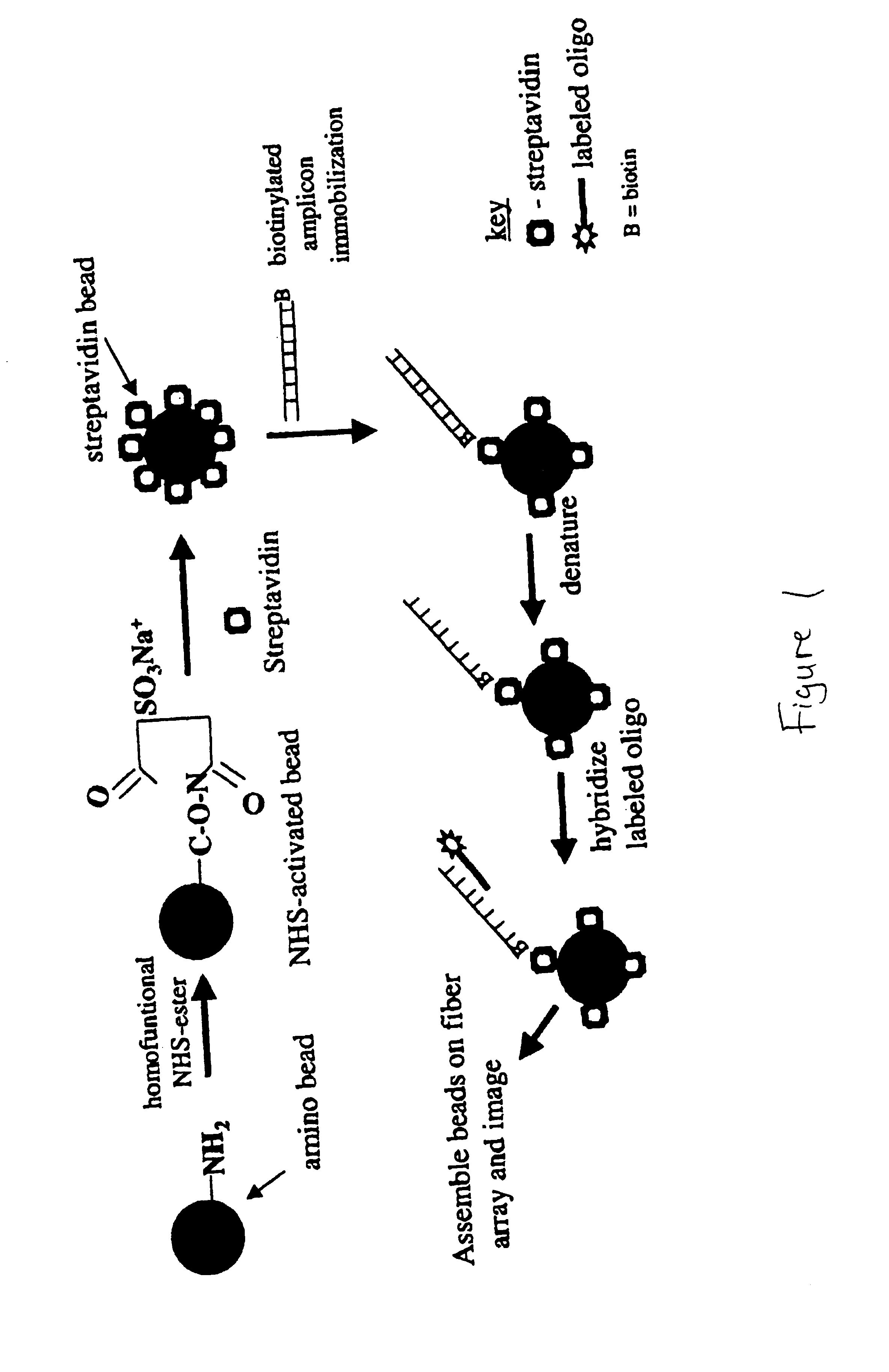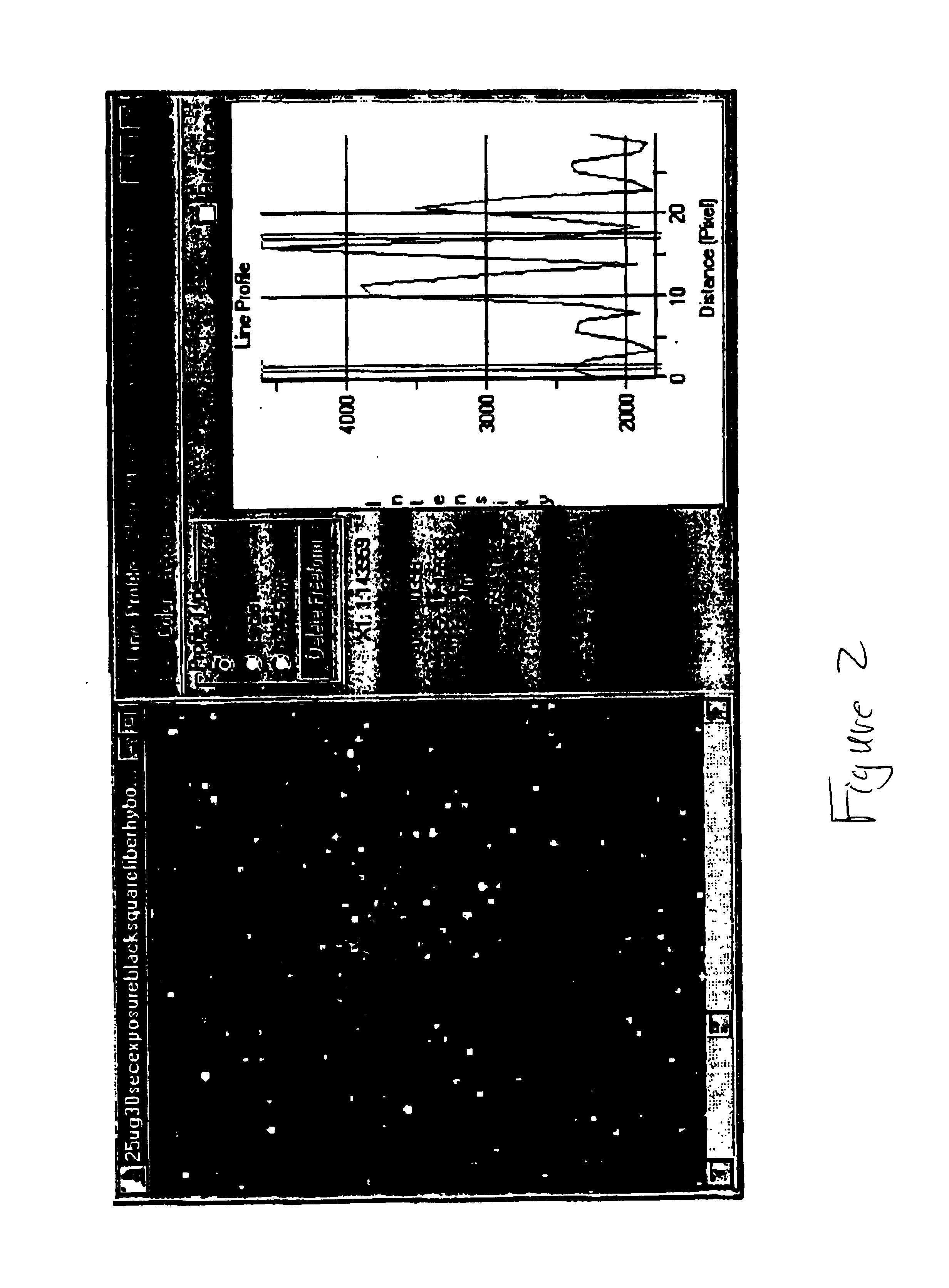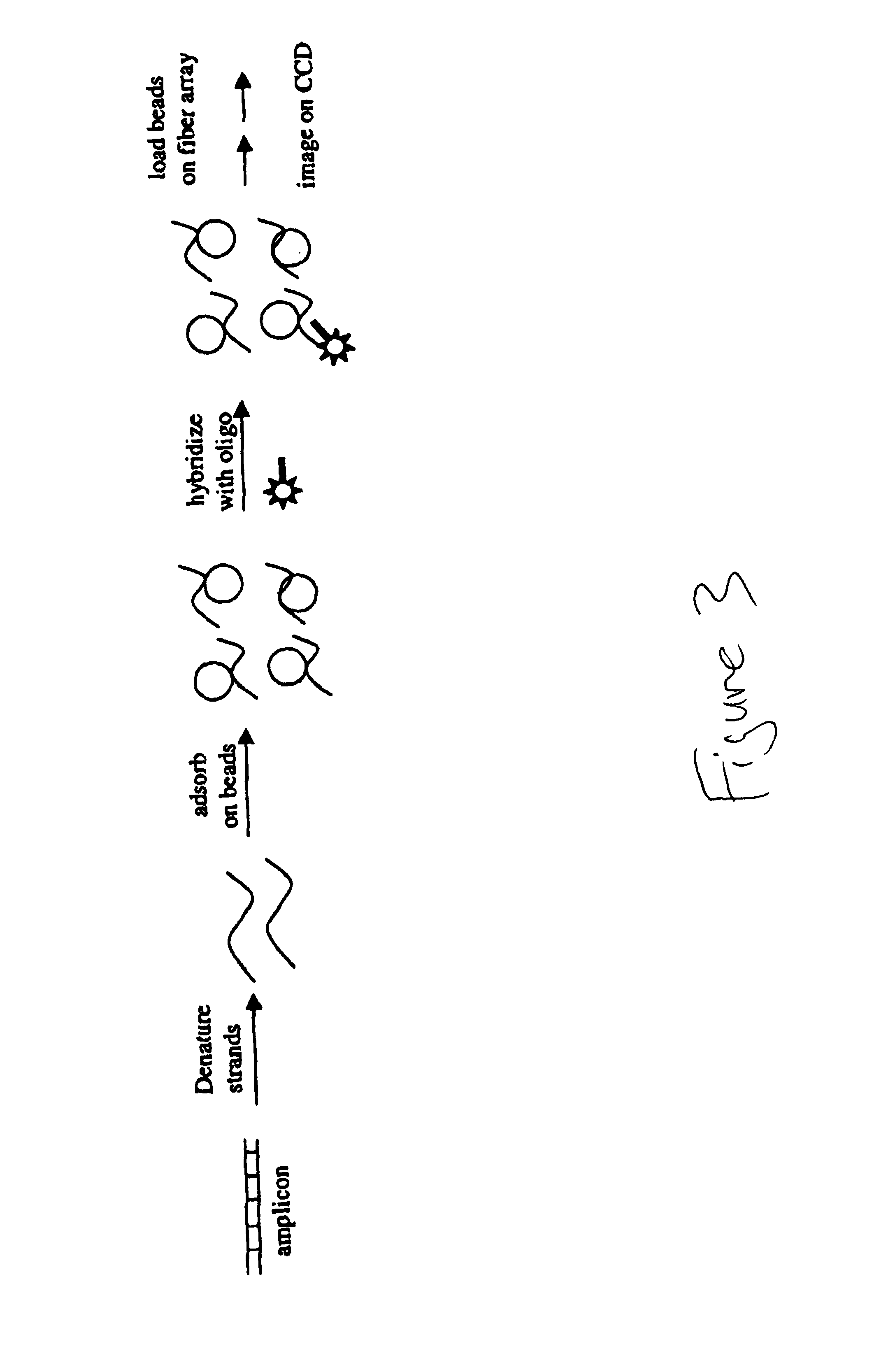Parallel genotyping of multiple patient samples
a technology for genotyping and patient samples, applied in the field of parallel genotyping (or other sample analysis) of multiple patients, can solve the problems of general difficulty in use, inconvenient use, and inability to analyze patient samples in parallel
- Summary
- Abstract
- Description
- Claims
- Application Information
AI Technical Summary
Problems solved by technology
Method used
Image
Examples
example 1
[0217]Experimental design for amplicon immobilization and hybridization to streptavidin beads.[0218]NHS-activate amino-modified silica beads and attach streptavidin (25 μg / mg of beads).[0219]Immobilize biotin-labeled amplicon to streptavidin beads by incubating for 20 minutes.[0220]Denature amplicon on streptavidin bead with 0.1 M NaOH.[0221]Wash beads in hybridization buffer −0.6× SSC+0.1% Tween 20.[0222]Hybridize to amplicon complementary (fluorescein-labeled) oligo at 50 nanomolar at room temperature for 120 minutes.[0223]Wash once with hybridization buffer.[0224]Load beads on fiber array.[0225]Image on CCD camera system.[0226]A flow chart summarizes the procedure as outlined in FIG. 1. Results are displayed in FIG. 2.
example 2
[0227]Experimental Design for amplicon immobilization and hybridization to amino-beads.[0228]Adsorb known mass (i.e. 100 ng-500 ng) of purified, heat denatured 540-mer amplicon to 1 mg of amino-modified silica solid phase in dH20. (Negative control solid phase=zero nanograms of 70-mer).[0229]Wash beads 2× (dH20) and 1X (0.1 M NaOH) (200 pL).[0230]Wash 1× with Hybridization Buffer (200 μL).[0231]Hybridize with 5×10−7 M FAM-labeled complementary oligonucleotide to equilibrium (75 minutes) in 400 mM Na+HCO3 / CO3) 5× Denhardts (pH 9.5).[0232]Stringency Wash 2× with Hybridization Buffer (400 mM Na+HCO3 / CO3) 5× Denhardts (pH 9.5).[0233]Load fiber array and image on CCD camera.
PUM
| Property | Measurement | Unit |
|---|---|---|
| Tm | aaaaa | aaaaa |
| sizes | aaaaa | aaaaa |
| sizes | aaaaa | aaaaa |
Abstract
Description
Claims
Application Information
 Login to View More
Login to View More - R&D
- Intellectual Property
- Life Sciences
- Materials
- Tech Scout
- Unparalleled Data Quality
- Higher Quality Content
- 60% Fewer Hallucinations
Browse by: Latest US Patents, China's latest patents, Technical Efficacy Thesaurus, Application Domain, Technology Topic, Popular Technical Reports.
© 2025 PatSnap. All rights reserved.Legal|Privacy policy|Modern Slavery Act Transparency Statement|Sitemap|About US| Contact US: help@patsnap.com



